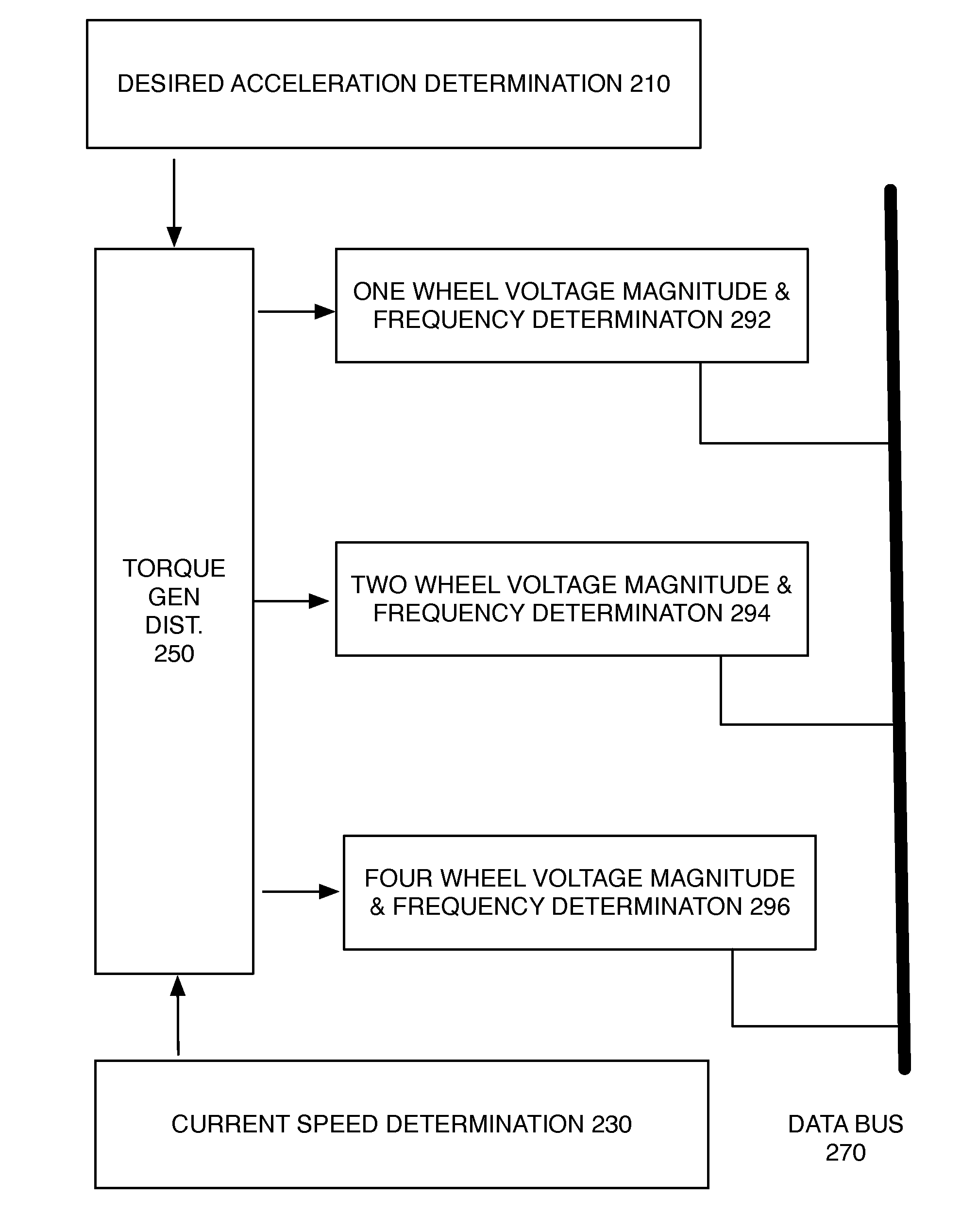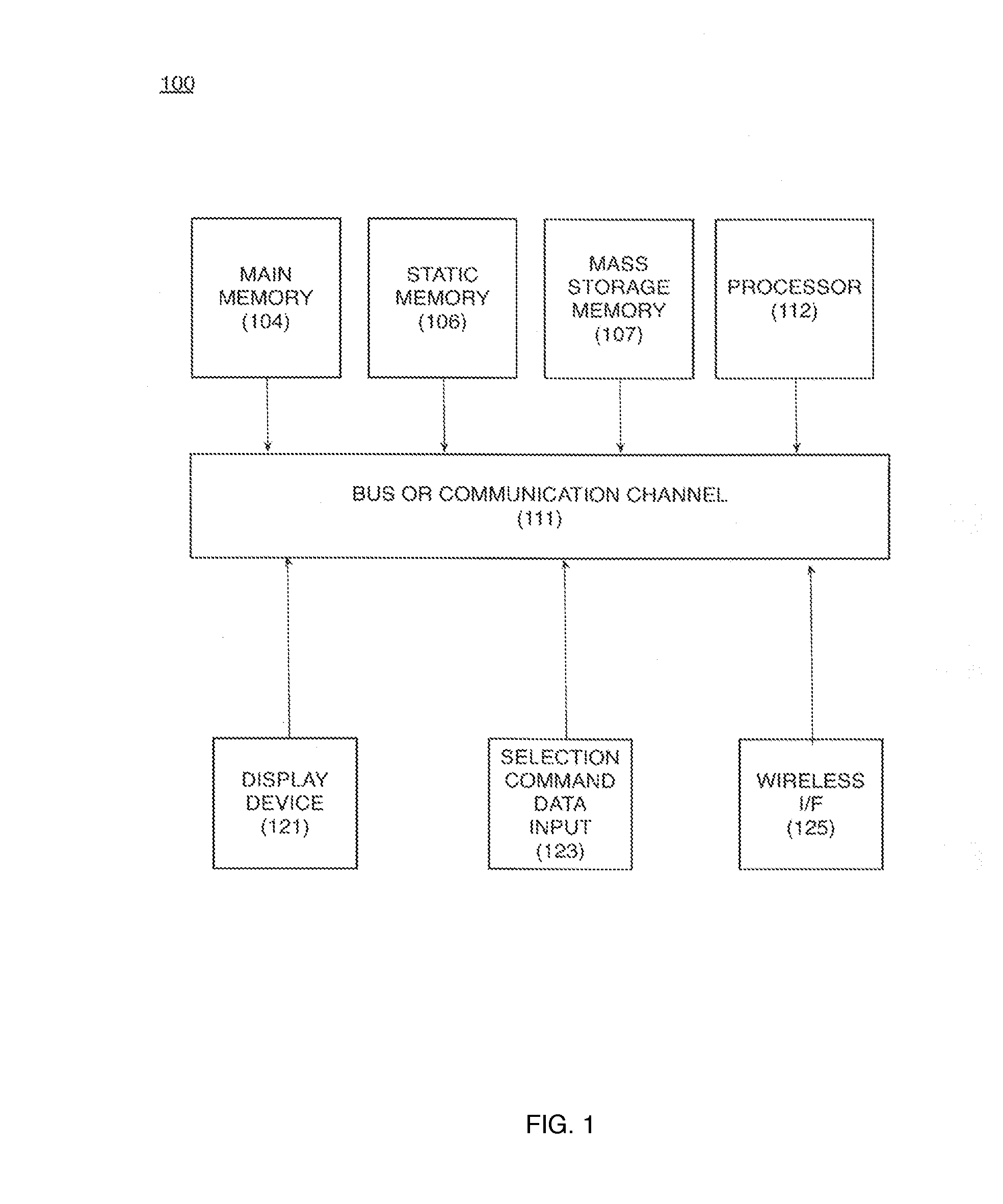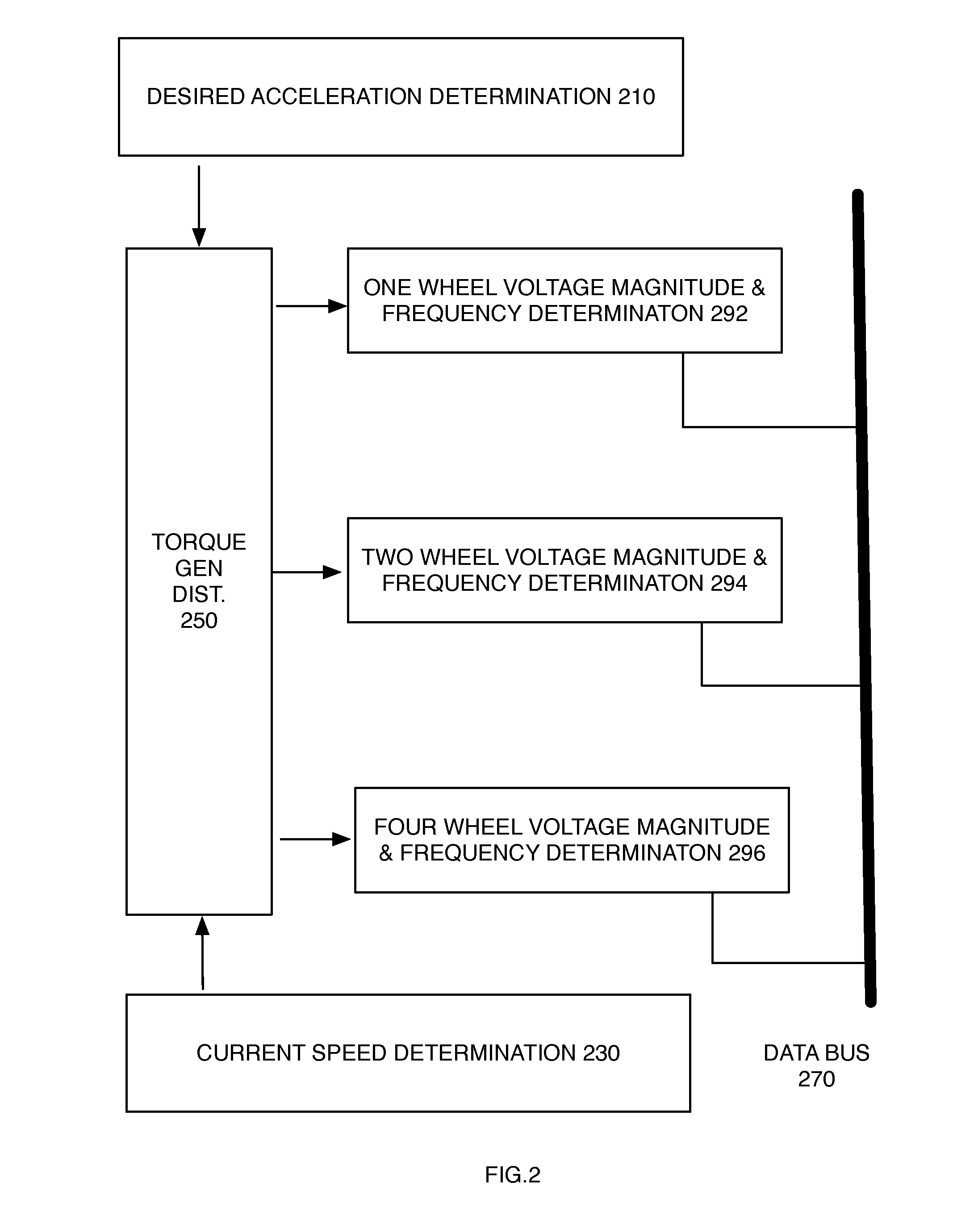Distributed Motor Torque Generation System and Method of Control
a technology of distributed motor and torque generation, which is applied in the direction of electric devices, propulsion by batteries/cells, transportation and packaging, etc., can solve the problems of not monitoring the steering angle, front wheels, however, do not receive different amounts of torque, and vehicles do not respond immediately, etc., to achieve fast acceleration and deceleration, reduce cost and power consumption, and reduce the effect of motor siz
- Summary
- Abstract
- Description
- Claims
- Application Information
AI Technical Summary
Benefits of technology
Problems solved by technology
Method used
Image
Examples
Embodiment Construction
[0056]Reference will now be made to the drawings to describe various aspects of exemplary embodiments of the invention. It should be understood that the drawings are diagrammatic and schematic representations of such exemplary embodiments and, accordingly, are not limiting of the scope of the present invention, nor are the drawings necessarily drawn to scale.
[0057]Referring now to FIG. 2, an embodiment of an apparatus for controlling voltage magnitude and voltage frequencies at one or more AC motors. A one wheel determination circuit 292 is coupled to a data bus 270. A two wheel determination circuit 294 is coupled to the data bus 270. A four wheel determination circuit 296 is coupled to the data bus 270. Depending on the determination of the torque generation distribution circuit 250, the addressable Adaptive Field-Oriented Control circuits associated with each AC motor will receive a digital indicia of voltage magnitude and voltage frequency to be provided to their respective atta...
PUM
 Login to View More
Login to View More Abstract
Description
Claims
Application Information
 Login to View More
Login to View More - R&D
- Intellectual Property
- Life Sciences
- Materials
- Tech Scout
- Unparalleled Data Quality
- Higher Quality Content
- 60% Fewer Hallucinations
Browse by: Latest US Patents, China's latest patents, Technical Efficacy Thesaurus, Application Domain, Technology Topic, Popular Technical Reports.
© 2025 PatSnap. All rights reserved.Legal|Privacy policy|Modern Slavery Act Transparency Statement|Sitemap|About US| Contact US: help@patsnap.com



